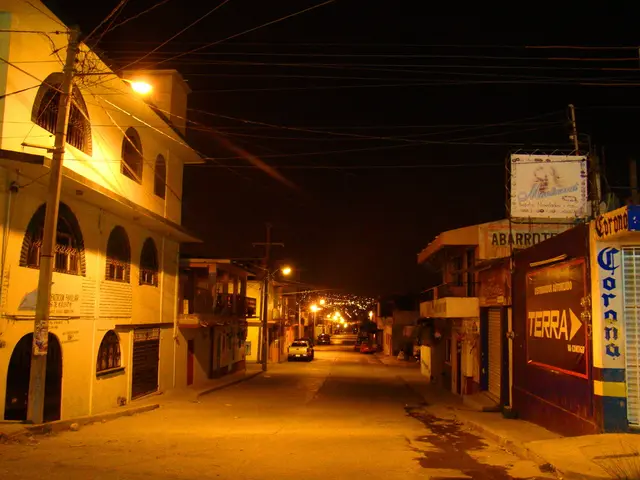Technological Advancements Aid Departments of Transportation in Overcoming Winter Weather Challenges
It's an age-old tale, but winter storms like the ones hitting the Midwest and Northeast are no longer the roadblocks they once were. Modern weather modeling and technology are giving Departments of Transportation (DOTs) and travelers a leg up in navigating the icy challenges.
Technology to the Rescue
Communities are doing their best to adapt to changing weather patterns and tight budgets. Technology is proving to be a valuable ally in this fight. Climate models help DOTs predict future winter patterns, which can inform everything from purchasing trucks and stockpiling sand to allocating resources.
Hyperlocal weather models also offer real-time insights, allowing communities to respond more effectively to storms. High-resolution forecasts, road sensors, and environmental assessments can reveal critical information about a storm's impact, helping teams target their resources more efficiently.
One tool that's been gaining traction is the Maintenance Decision Support System (MDSS). This system integrates road weather forecasts, maintenance best practices, and real-time data to guide snow and ice treatment strategies, ensuring that resources are deployed effectively.
The Price of Winter
Winter storms can be costly, and communities that deal with heavy snowfall regularly devote large chunks of their budgets to snow removal. And it's not just budgets that take a hit: power outages, flight delays, and cancelled events are all part of the package.
But it's not just heavy-snow areas that feel the impact of winter storms. Even minor storms can bring a city to its knees in areas that aren't used to snow. In 2014, a seemingly harmless 2.5-inch snowfall in Atlanta led to chaos, with children sleeping in schools and drivers abandoning their cars.
Smart Solutions for Winter
From snowplow signal prioritization technology to real-time data analysis, AI is providing smarter, more efficient solutions for winter weather management. By integrating advanced forecasting and decision-support tools, DOTs can ensure safer roads, more efficient responses, and better-prepared communities for the storms ahead.
After all, we can't control the winter weather, but with a little help from AI, we can make smarter, data-driven decisions.
Enrichment Data:
Impact of Advanced Technology on Winter Storm Management:
- Snowplow Signal Prioritization Technology: Advanced AI-powered algorithms allow snowplows to navigate intersections more efficiently, reducing the time required to clear roads and minimizing disruptions.
- Real-Time Data Analysis: AI-powered systems continuously assess road conditions, weather patterns, and traffic volumes, allowing for dynamic decision-making and real-time adjustments to traffic signal timings.
- Optimized Route Planning: Machine learning algorithms analyze historical data to refine snow removal strategies, ensuring safer roads and more resilient communities.
- Enhanced Safety: AI-powered systems minimize the risk of collisions, improve overall traffic flow, and prioritize critical infrastructure access during severe weather conditions.
- Resource Allocation: AI and data technology help optimize resource allocation, ensuring efficient use of equipment and personnel and minimizing disruptions to urban mobility.
- Integration with Other Services: Future systems may integrate with public transportation networks and emergency services, providing a comprehensive approach to winter management.
- Data-Driven Urban Planning: The data collected through these AI-powered systems offers valuable insights for long-term urban planning and infrastructure development, informing decisions about road design, resource allocation, and emergency response protocols.
By leveraging these technological advancements, DOTs can significantly improve their management of winter road conditions, reduce the impact of severe weather events, and enhance overall urban mobility and safety.
In the face of increasing winter challenges, technology has become an indispensable tool. For instance, during a winter storm, a DOT might use a Maintenance Decision Support System to ensure efficient deployment of resources, represented by the dot on the map, in response to real-time weather conditions and forecasts, like the chilling winter dots that dot the weather map.








